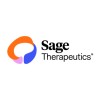
Safety, Efficacy, and Tolerability of NBI-827104 for the Treatment of Essential Tremor
Essential TremorThe main objective of this study is to evaluate the efficacy, safety, and tolerability of NBI-827104 in adults with essential tremor.

Electrophysiological Study of the Effects of Limb Cooling on Essential Tremor
TremorTo determine the effects of upper limb forearm cooling on Essential Tremor upper limb tremor using a more practical method of limb cooling through a forearm cold pack.

A Proof of Concept Study of the Effectiveness of Carisbamate in the Treatment of Essential Tremor...
Essential TremorMovement DisordersThe purpose of this study is to evaluate the effectiveness, safety and tolerability of carisbamate treatment for the signs, symptoms, and impairment associated with Essential Tremor (ET) compared to placebo treatment. The secondary objective is to evaluate the effect of carisbamate treatment on indicators of affect and mood in patients who have ET compared to placebo treatment.

Pregabalin (Lyrica) for the Treatment of Essential Tremor
Essential TremorThis will be a multi-site, prospective, double-blind, randomized, placebo-controlled, crossover trial conducted over 6 months to assess the effectiveness and safety of PGB to treat symptoms of ET.

A Study to Evaluate the Efficacy, Safety, and Tolerability of SAGE-324 in Participants With Essential...
Essential TremorThis is a phase 2, double-blind, placebo-controlled study to evaluate the safety and efficacy of SAGE-324 compared to placebo on upper limb tremor reduction in individuals with essential tremor (ET).

A Clinical Study to Evaluate CAD-1883 in Essential Tremor
Essential TremorThis is an open-label study designed to evaluate the safety, tolerability and efficacy of CAD-1883, a positive allosteric modulator of the SK channel, administered twice daily orally to adult patients with ET. Patients with the diagnosis of ET based on the Movement Disorder Society (MDS) criteria with a documented severity of tremor based on the clinician-administered TETRAS Performance Subscale are eligible to be enrolled in the study.

Symptomatic Relief of Action Tremor With Cala Trio Using Trio+ Bands
Essential TremorParkinson DiseaseDemonstrate safety and effectiveness of symptomatic action tremor relief in the treated hand following stimulation with the Cala Trio System using the Trio+ bands as compared to the Trio bands in adults with Essential Tremor (ET) and/or Parkinson's Disease (PD) over 2 weeks.

A Clinical Trial of PRAX-944 in Participants With Essential Tremor
Essential TremorThis is a 2-part clinical trial to evaluate the efficacy, safety, and tolerability of 40 and 120 mg oral PRAX-944 compared to placebo in the treatment of adults with essential tremor. Part A is designed to study the dose titration from 20 to 40 mg every morning (QAM) (ie, 2 weeks with 7 days at each dose level). Part B is designed to study the dose titration from 20 to up to 120 mg QAM with at least 14 days of dosing at the highest tolerated dose for each participant. Blood levels of PRAX-944 will also be measured throughout the trial and pharmacokinetics will be evaluated.

A Pilot Study to Assess the Effects of Pre-SMA LF-rTMS for the Treatment of Essential Tremor
Essential TremorThe purpose of this study is to determine the effects of Low Frequency Repetitive Transcranial Magnetic Stimulation (LF r-TMS) of the pre-Supplementary Motor Area (pre-SMA) on tremor as measured by the tremor rating scale (TRS) in patients with Essential Tremor (ET). Hypothesis: Pre-SMA LF r-TMS will result in a >30% reduction in tremor as measured by the TRS. Another purpose of this study is to identify the mechanism by which LF r-TMS of the pre-SMA effects tremor in patients with ET. Hypothesis: Inhibition of the pre-SMA by LF r-TMS improves tremor in ET by normalizing pre-SMA output, and improving motor control, as determined shortening of the delay in the second agonist burst, seen in ET patients. At conclusion of this study expect to have sufficient pilot data to justify larger pivotal trials designed to establish the efficacy of pre-SMA r-TMS in ET.

Wearable Sensor for Responsive DBS for ET
Essential TremorThe purpose of this study is evaluate the effectiveness and safety of a possible new treatment for Essential Tremor (ET) using external wearable sensors, which have the capability of recording acceleration and Electromyography (EMG). This therapy is called Responsive Deep Brain Stimulation (R-DBS). R-DBS systems will communicate with a computer, and apply stimulation when the computer detects patterns associated with tremor. This detection will suppress pathological activity and improve or alleviate the tremor. Currently, DBS is approved for the treatment of ET; however, stimulation is delivered continuously even when tremor or other symptoms are absent. Continuous DBS can lead to unwanted side effects such as stuttering and gait\balance problems. On the other hand, R-DBS will turn on only if activity associated with ET from the external sensors is detected.
